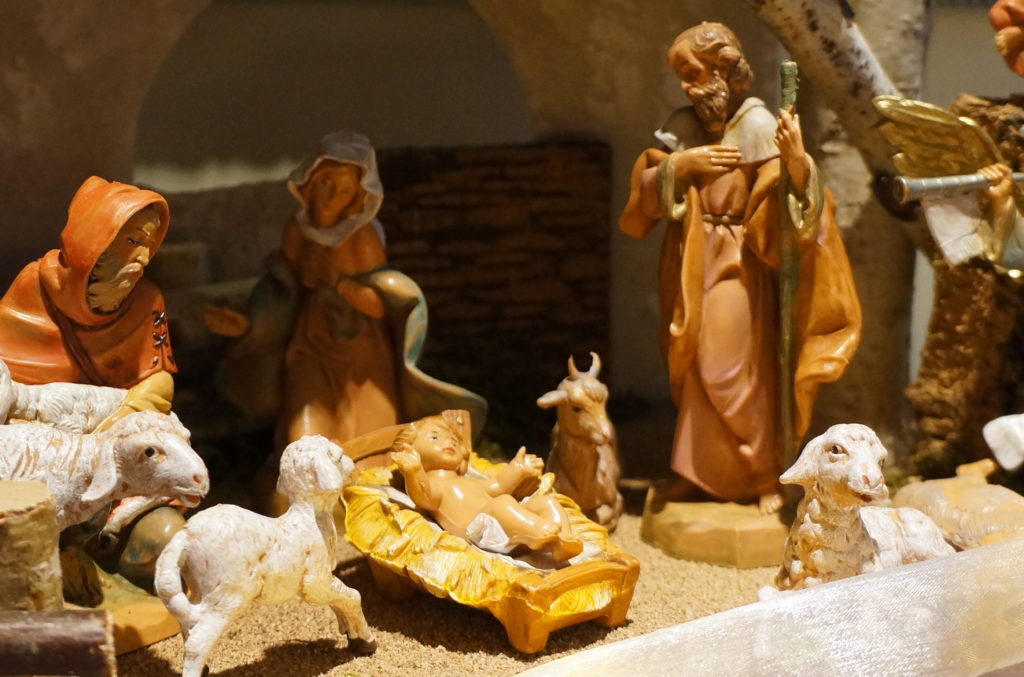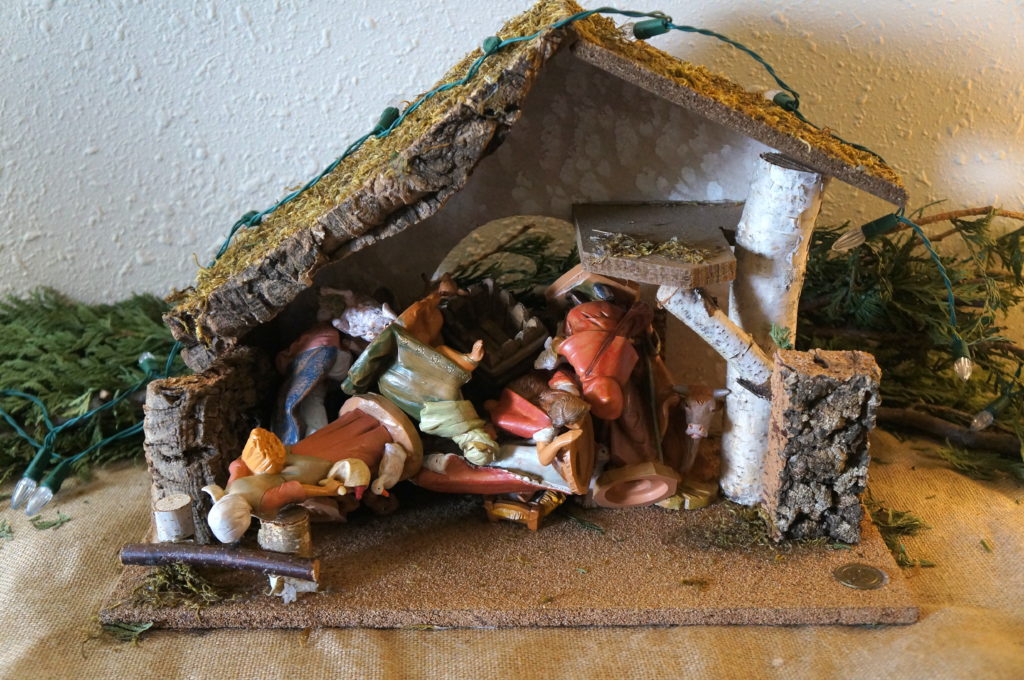Earlier this week, ironically on the feast of the Chair of St. Peter, I started leafing through a new thread of news about the scandals in the Church, and the anti-abuse summit. Reading through it all renewed the anger, sorrow, and desperation I feel for the Church right now. There are lots of ways to respond to all of this, and like everybody, I think I’ve gone through them all in my head.
I hear and see people leaving the Church. Some of them are victims, and Lord have mercy, I wouldn’t dare begrudge that; I can only plead with God for healing. But my assumption for the others is that they are fed up, feel they can’t trust the Church anymore, and are generally disgusted because it is full of sinners and hypocrites. I understand this, but…
Yes, the Church is made up of sinners. Here’s the deal: growing up Protestant in the United States, I knew there was corruption in the Catholic Church. But it made all the difference to realize that the Church herself was not corrupt, rather many of its members are corrupted by sin. If there are butchers, bakers, and candle-stick makers in hell, then there are priests, bishops and popes. We’re all sinners, dependent on the grace of Jesus Christ, working out our salvation with fear and trembling. We fail, we go to Confession, we resolve to do better with the help of God’s grace.
Yes, there are hypocrites in the Church. I heard someone tell my mother once that they didn’t go to church because of all the hypocrites there, and my mother, who has a clever retort for everything (which I LOVE about her), replied, “Then you better not go grocery shopping anymore. Because there’s hypocrites there too!” There are hypocrites everywhere. Should we hold our clergy to a higher standard? Possibly. Does it hurt more when we see them fallen? Of course it does, because we look to them to shepherd us. However, they are human and will fall, and we might even see them do it.
Every time I hear about another sexual abuse case, I want to go on a castration rampage (though to be fair, women are perpetrators as well). As recent reports suggest, pedophilia is not just a canker in the Church. I grew up in the relatively small Quaker church and even I knew kids who had been abused by their youth pastors. When I was a high school student, there was a teacher who had an illicit homosexual relationship with a student. She was moved districts. We found out later, she had been moved from another district previously for doing the same thing. Schools move pedophiles around, the Church moves pedophiles around: STOP DOING THAT. The protection of minors is a universal issue that needs to be addressed by the entire human race. Is it worse when a priest commits such a heinous act? Yes, absolutely. Because, again, we look to them as our shepherds. The Church should be the one to lead the way in protecting our most vulnerable.
I also hear and see Catholics (including myself at times) picking a scapegoat to blame (i.e. clericalism, Vatican II, homosexuality, celibacy, etc.). I understand that intense desire to put the scarlet letter on someone or something and get rid of it. But I don’t think it’s going to be that simple. What I see happening with the pick-a-scapegoat-faction of Catholics is an “us vs. them” mentality that worries me. This kind of thinking often leads to spiritual pride. I think this is a temptation to overlook the root causes. If you start the blame-game, before long you’re running in a circle.
Yes, clericalism is to blame: clergyman abused their office. There was clearly a lack of accountability, and a fear of reporting on the part of the victims because the perpetrator in many cases was not just a family confidant, but claimed to be a representative of Christ. But why is the abuse happening in the first place? Many Catholics claim homosexuality is to blame, but I think a more accurate target would be sexuality in general. We’re seeing the consequences of sexual gluttony, and that doesn’t just pop up overnight. Sick, sexual addiction builds over time. I believe some of these men became priests with good intentions, but their sinful inclinations were not only unchecked, but were encouraged and fostered. The biggest failure were the loopholes which allowed perpetrators to live like kings in their “empire of dirt”.
There is yet another choice, another way to respond to this exposé of sin and betrayal of trust, and that is to continue on as before, but with renewed vigor in Catholic life in hopes of revitalizing the Church from the inside out.
I truly believe there are things we ordinary people can do to help the Church—and that is to focus on our own spiritual growth and the spiritual nurturing of our families and parishes. One of the focuses of Vatican II was to instill in the laity the need to grow in holiness. We can faithfully practice the teachings of the Catholic Church, especially the teachings on sexuality. We can love our priests and pray for them. We can hold our priests and bishops accountable.
We can be faithful to the Church’s teachings on sexuality, within marriage or the single life. The Catholic Church’s teachings and standards of sexuality are challenging and difficult for all of us; they are also good and true. It is particularly difficult now in our society when the message of self-gratifying sex is absolutely everywhere, where pornography is rampant, where one is encouraged to “scratch your itch”, whatever that may be; that pursuing your sexual desires is discovering the “true you.” Clergy have been riddled with the same soul-penetrating bullets we all have. It’s no coincidence that at the same time sexual impurity among the clergy is coming to light, marriage as a vocation is also in a state of crisis within the Church. While we call out the clergy’s sexual sin, we also need to address our own, and make sure we remain faithful to the Church’s teachings. And the Church is not just a purity brigade—the “theology of the body” is multi-faceted and rich, beautiful and enlightening—it’s just good stuff. But the more entrenched our society becomes in sexual gluttony that’s mislabeled as sexual freedom, the more at risk all of us will be of heinous crimes.
I have been really blessed in my years as a Catholic to know awesome priests. But they are human and will fall, just like the rest of us. I recently heard a priest say, “A man goes into seminary, what do you think, the devil falls asleep?” We have to pray for our priests and seminarians. St. Therese of Liseiux had a vision once of how sinful a certain priest was; it was made known to her how in danger the soul of this particular priest was, which inspired her to re-double her prayers for clergy. We don’t need private visions today—it’s all over the news. We need to pray for them.
The way of mercy includes calling out shit when it’s shit. It is a good thing all of this terrible, rotten awful-ness is coming to light. It’s been festering long enough, stinking to high-Heaven before we all knew about it. We can hold our bishops accountable and still respect their office as our shepherds. I don’t know exactly what this would look like, but I do know that admonishing the sinner is an act of mercy. We can’t be afraid to admonish a sinner even if that is a clergyman.
In the end, as much as I love the priests in my acquaintance, I know I didn’t become Catholic because of the holiness of the clergy. I became Catholic because it is Truth. I became Catholic because I wanted to be as close to Jesus Christ as I could here on earth, and I receive that gift in the Holy Eucharist. I need the Church—I need her Sacraments, her tradition, anchored with the promise from Christ himself that the gates of hell would not prevail against it. The Church will go the way of her Lord, and I will go with her; there is no resurrection without the crucifixion. The Church is not characterized by the evil men and women that are within it, nor is she characterized by her saints—she is who she is because of Christ himself. He established her, He sustains her, He will see her through.
{St. Therese’s Prayer for Priests}
O Jesus, I pray
for your faithful and fervent priests;
for your unfaithful and tepid priests;
for your priests laboring at home or abroad in distant mission fields;
for your tempted priests;
for your lonely and desolate priests;
for your young priests;
for your dying priests;
for the souls of your priests in Purgatory.
But above all, I
recommend to you the priests dearest to me:
the priest who baptized me;
the priests who’ve absolved me from my sins;
the priests at whose Masses I’ve assisted and who’ve given me Your Body and
Blood in Holy Communion;
the priests who’ve taught and instructed me;
all the priests to whom I am indebted in any other way, especially ____
O Jesus, keep them
all close to your heart,
and bless them abundantly in time and in eternity. Amen.



